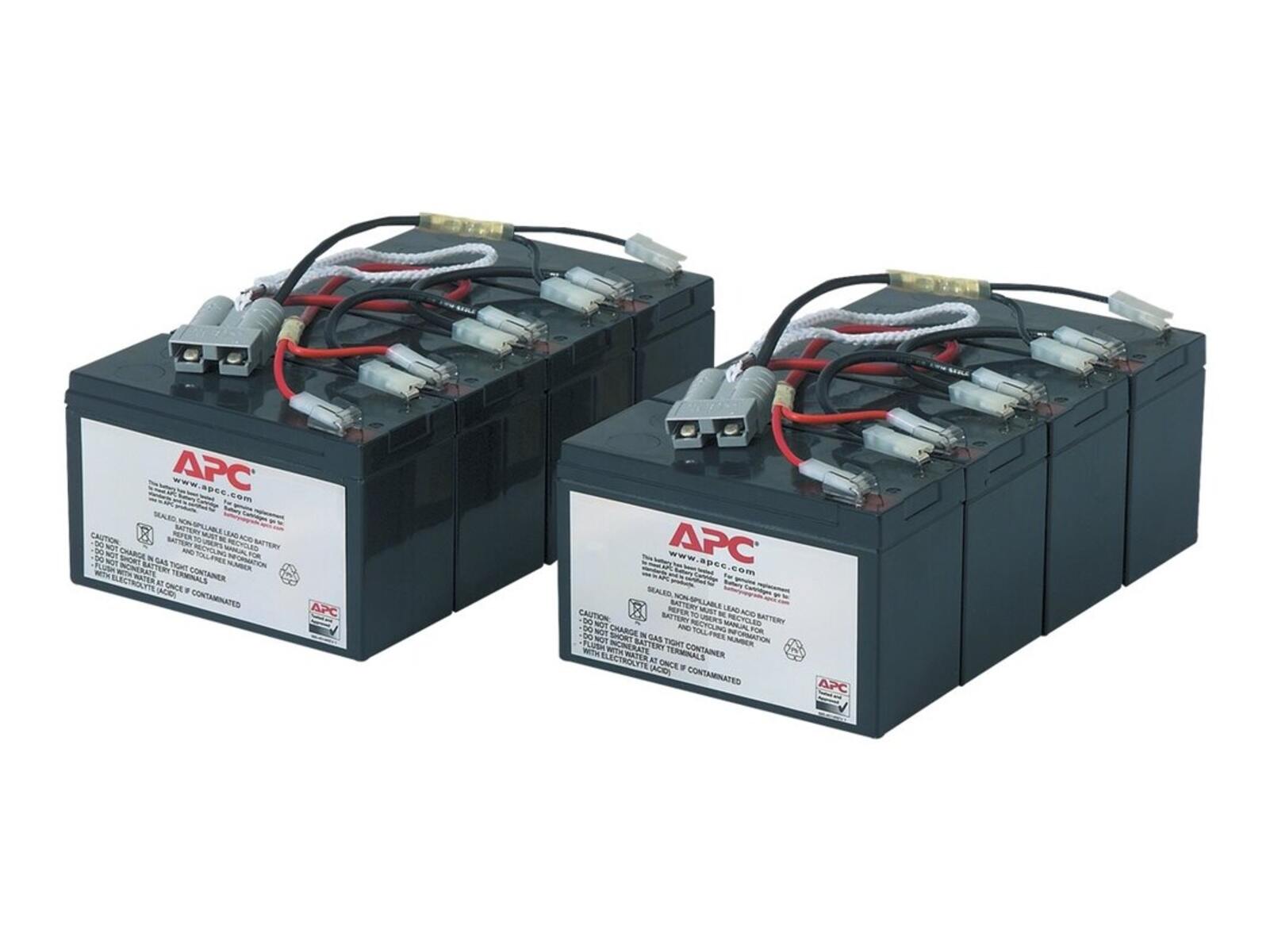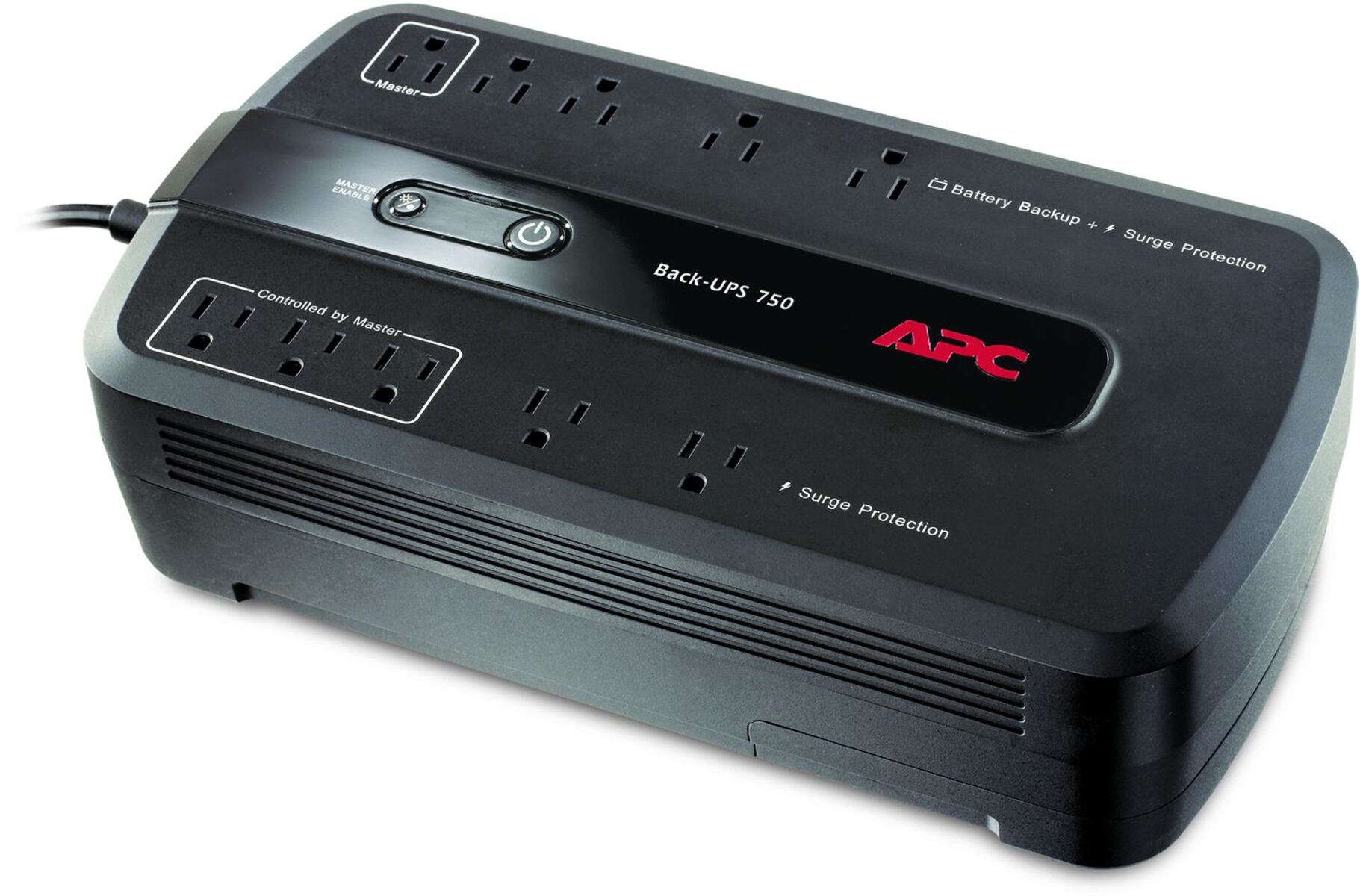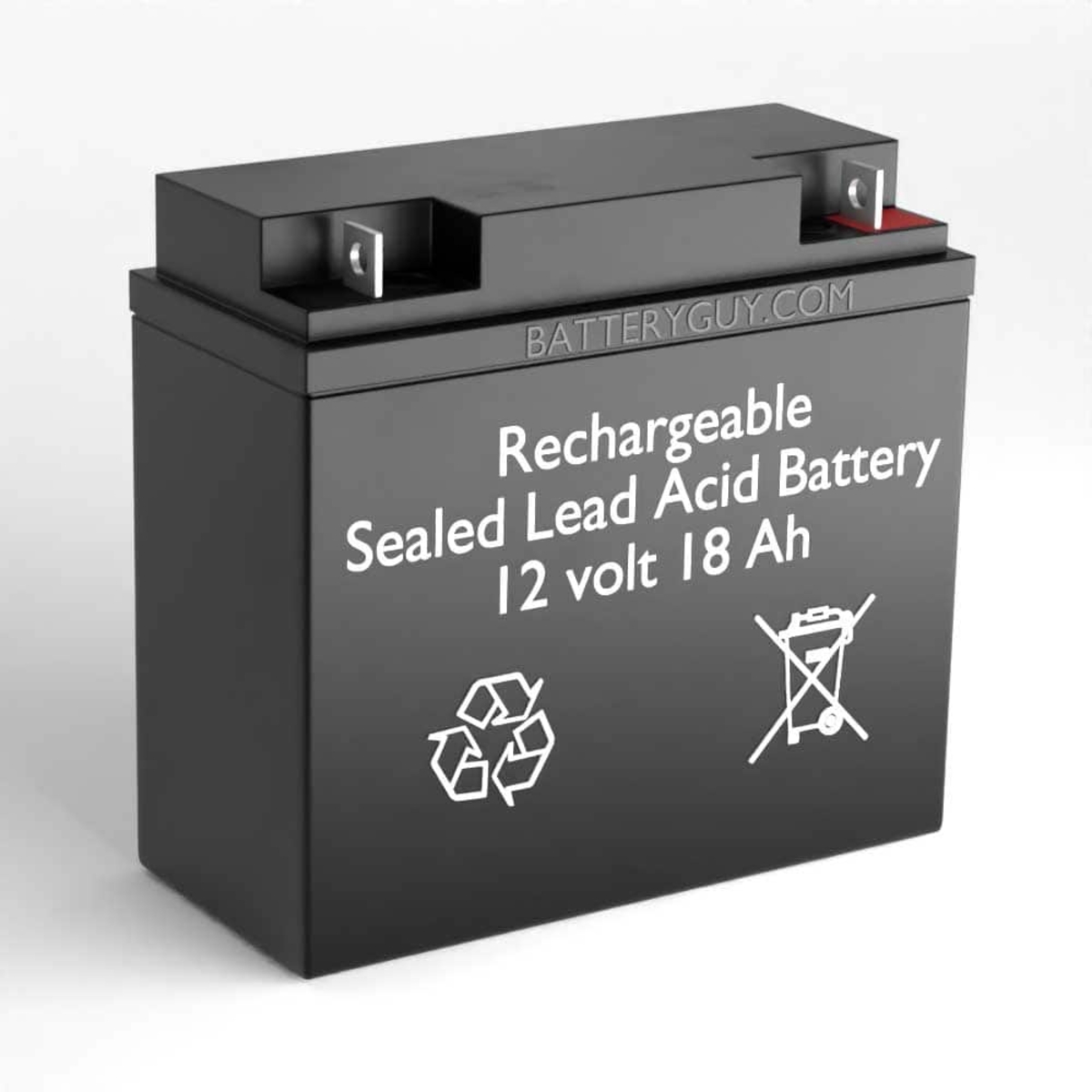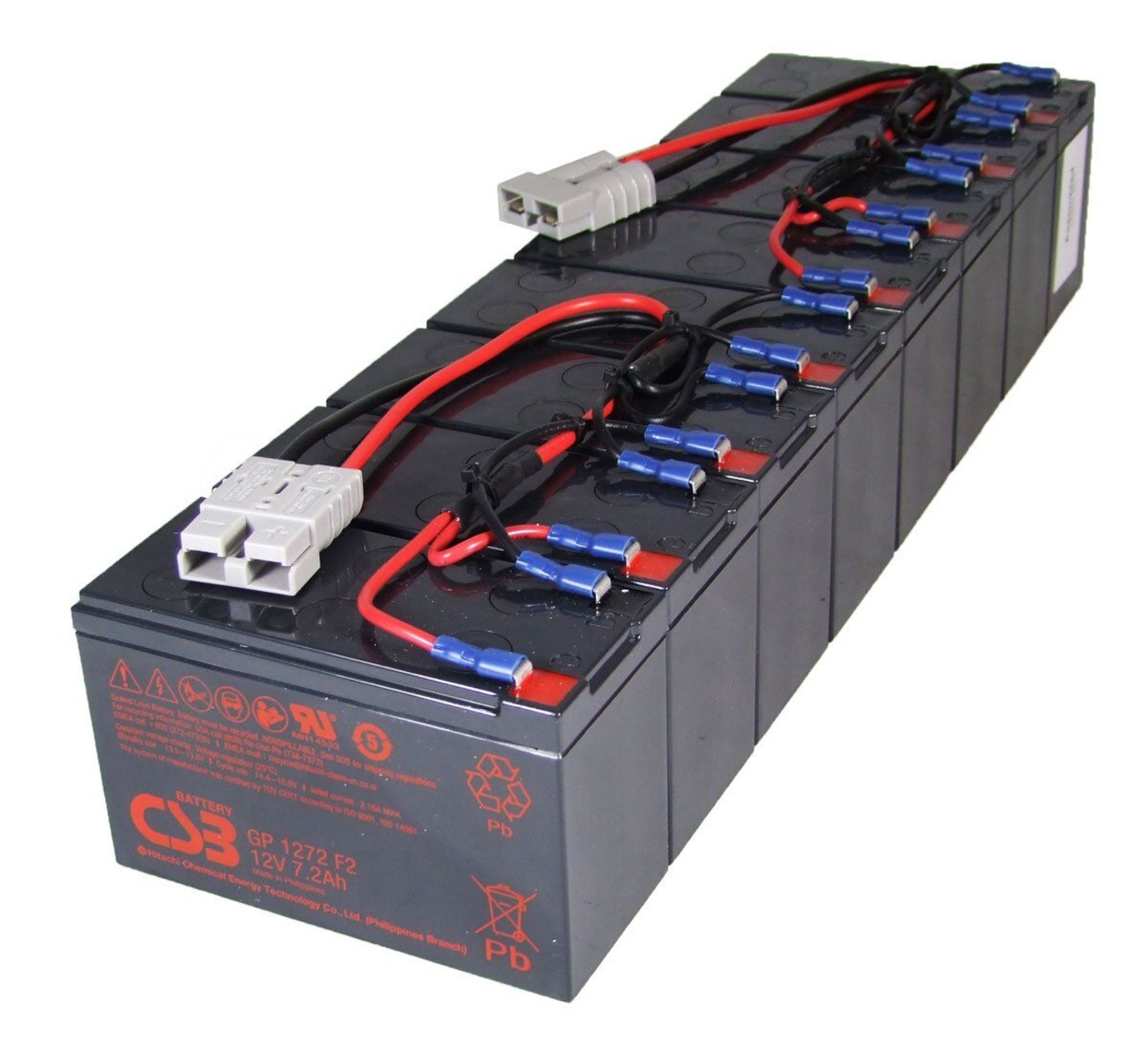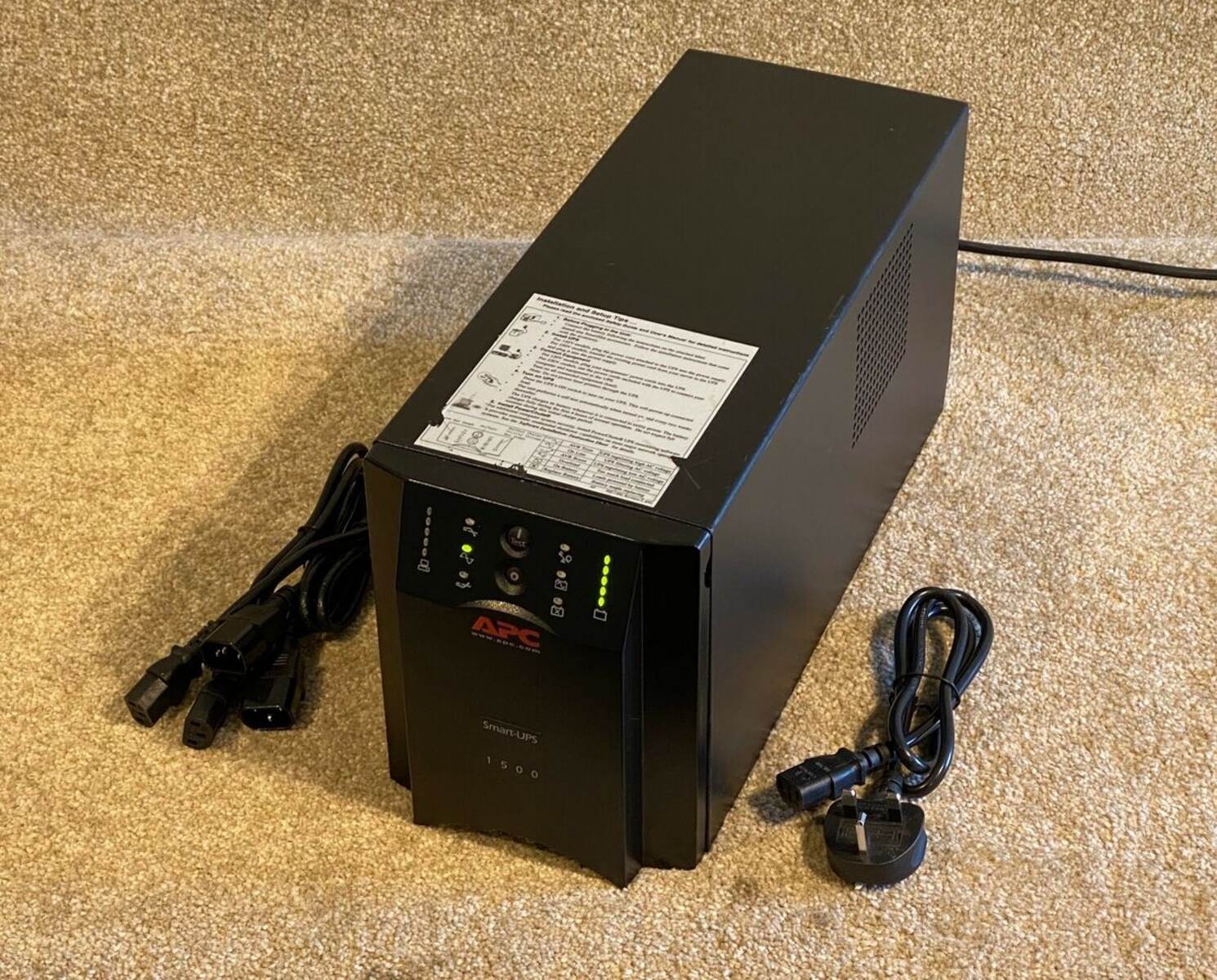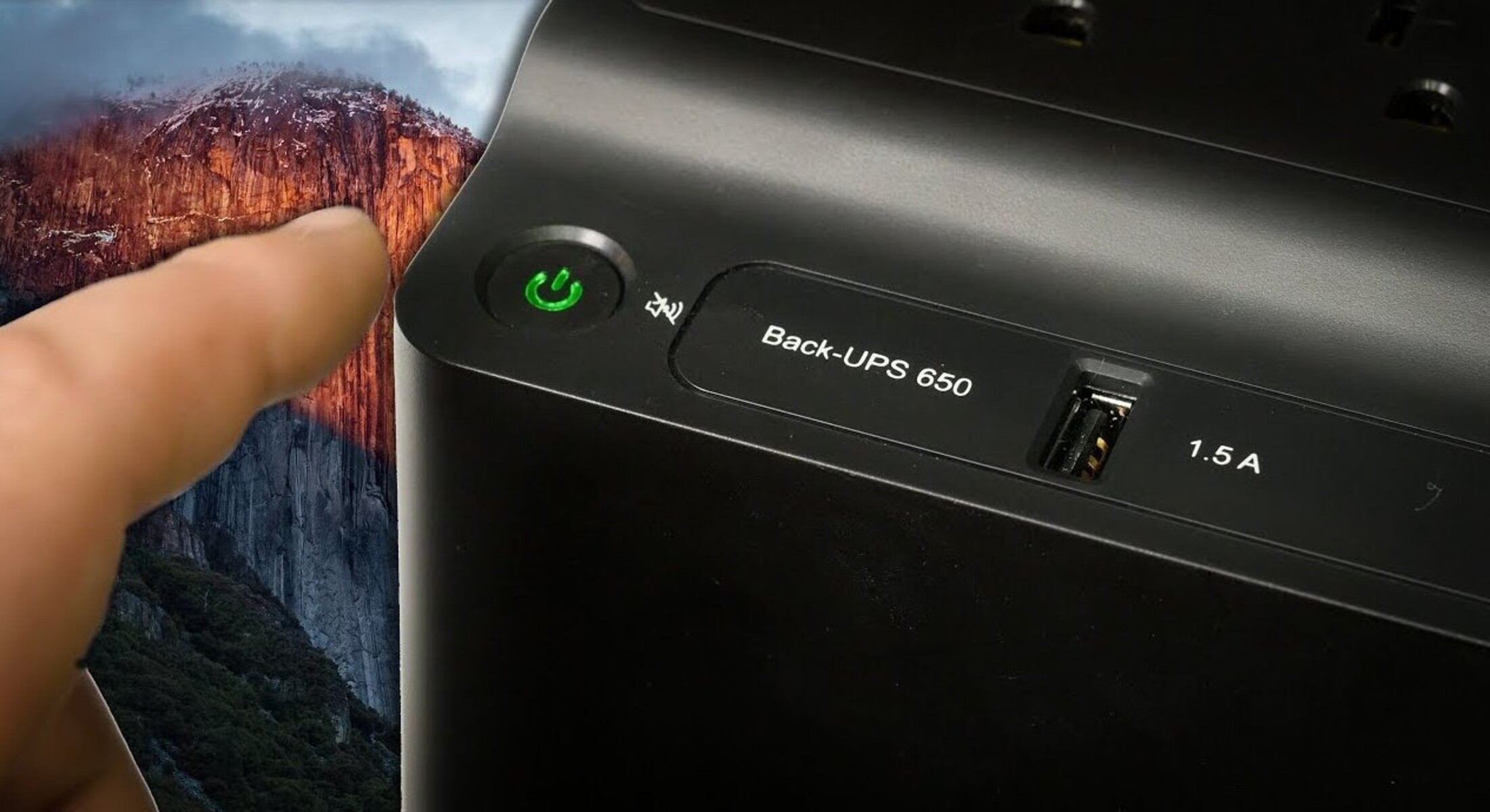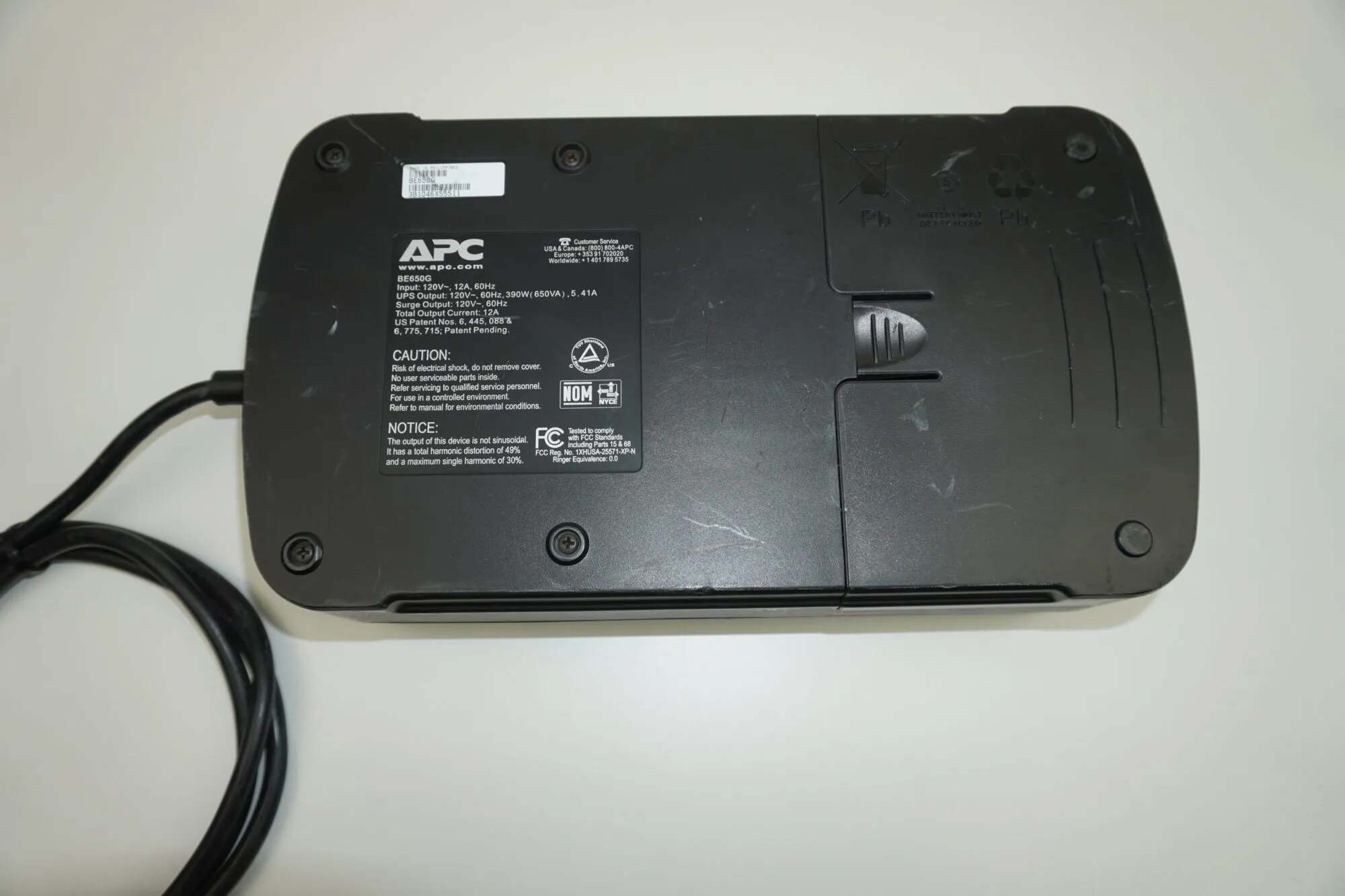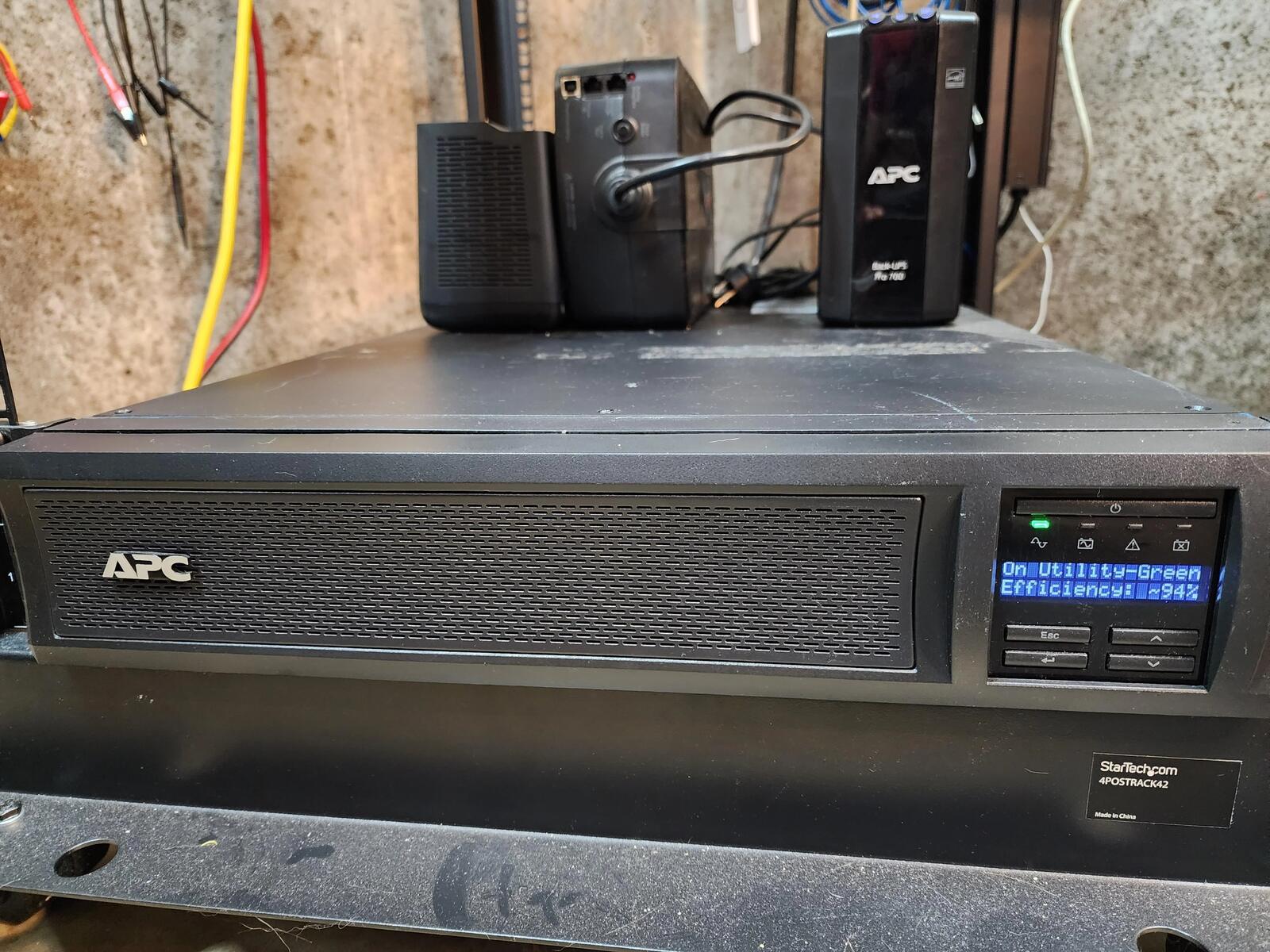Introduction
When it comes to disposing of an APC UPS (Uninterruptible Power Supply) battery, it’s important to follow the proper guidelines to ensure both your safety and the environment’s well-being. APC UPS batteries contain hazardous materials that can be harmful if not disposed of correctly.
In this article, we will guide you through the steps to safely and responsibly dispose of your APC UPS battery. We will also provide you with various recycling options to choose from. By following these steps, you can contribute to a cleaner environment and prevent any potential harm.
It is crucial to keep in mind that improper disposal of UPS batteries can lead to the release of toxic chemicals into the environment, posing health risks to humans and wildlife alike. By taking the appropriate steps to dispose of your battery, you can help mitigate these dangers.
Please note that the following steps are general guidelines and may vary depending on your location. It’s always a good practice to check with your local regulations and waste management authorities for specific guidelines in your area.
Safety Precautions
Before you begin the process of disposing of your APC UPS battery, it’s crucial to take adequate safety precautions to protect yourself and others. Here are some essential safety measures to keep in mind:
- Wear Protective Gear: When handling the UPS battery, it’s recommended to wear gloves and protective eyewear to prevent any potential contact with corrosive substances.
- Work in a Well-Ventilated Area: Make sure to carry out the disposal process in a well-ventilated space. This will help minimize exposure to any harmful gases or fumes that might be released during the process.
- Keep Children and Pets Away: Ensure that children and pets are kept at a safe distance from the disposal area. Batteries contain hazardous materials that can be harmful if accidentally ingested or handled improperly.
- Avoid Damaging the Battery: Take care not to drop or damage the battery during the disposal process. Damaged batteries can leak harmful substances and pose additional risks.
- Follow Handling Instructions: Always follow the manufacturer’s guidelines and instructions for handling and disposing of the UPS battery. This will ensure that you are taking the appropriate steps for safe disposal.
- Do Not Dispose of in Regular Waste: Never dispose of the UPS battery in regular household waste or landfill. The hazardous materials present in the battery can have adverse effects on the environment if not handled correctly.
- Be Mindful of Local Regulations: Familiarize yourself with any specific regulations and guidelines regarding battery disposal in your area. Contact your local waste management authority or recycling center to understand the proper disposal methods available to you.
By following these safety precautions, you can ensure a safe disposal process for your APC UPS battery and minimize any potential risks or harm to yourself and the environment.
Step 1: Unplug the UPS Unit
The first step in safely disposing of your APC UPS battery is to unplug the UPS unit from the power source. This will prevent any electrical shock or accidents during the battery removal process.
To unplug the UPS unit, follow these steps:
- Locate the power cord connected to your APC UPS unit.
- Gently pull out the power plug from the electrical socket.
- Ensure that there is no power supply running to the UPS unit by checking if the lights on the device are turned off.
Once you have successfully unplugged the UPS unit, you can proceed to the next step of removing the battery. It’s important to emphasize that dealing with electrical components can be dangerous, and proper precautions should be taken to avoid any mishaps.
If you are unsure about the process or face any difficulties during the unplugging stage, it is recommended to consult the user manual provided by APC or seek professional assistance to ensure your safety.
Step 2: Remove the Battery
Once you have safely unplugged the APC UPS unit, the next step is to remove the battery from the device. Removing the battery requires careful handling to avoid any damage or exposure to hazardous materials.
Follow the steps below to remove the battery:
- Locate the battery compartment on your APC UPS unit. Depending on the model, the battery compartment may be located on the front, back, or side of the unit.
- Remove any screws or latches securing the battery compartment cover. Use a suitable screwdriver or tool to loosen and remove the fasteners.
- Once the cover is removed, you will have access to the battery. Carefully disconnect any connectors or wires attached to the battery terminals. Use caution and avoid any excessive force or bending of the connectors.
- Gently lift the battery out of the compartment. If the battery is heavy or awkward to handle, consider using gloves or asking for assistance to avoid any strain or accidents.
- Place the removed battery on a stable, non-metallic surface like a plastic tray or a cardboard box lined with plastic. This will help catch any potential leaks or spills from the battery.
Remember, batteries contain hazardous materials, so it’s important to handle them with care. Avoid dropping the battery or exposing it to extreme temperatures, as this may cause damage or lead to dangerous situations.
The removal process may vary depending on your specific APC UPS model. If you encounter any difficulties or are unsure about removing the battery, refer to the user manual provided by APC or seek professional assistance.
Step 3: Check for Recycling Options
After removing the APC UPS battery, it’s important to explore different recycling options available to you. Recycling helps ensure that the hazardous materials present in the battery are properly disposed of and do not harm the environment.
Here are some recycling options to consider:
- Check with the Manufacturer: APC, the manufacturer of your UPS unit, may offer recycling programs or provide guidance on how to dispose of their batteries. Visit their official website or contact their customer support to inquire about their recycling initiatives.
- Local Battery Retailers: Many battery retailers or electronics stores often have dedicated recycling programs for batteries. Check with these retailers to see if they accept APC UPS batteries for proper disposal. They may have drop-off points or specific collection days for recycling.
- Mail Back Programs: Some organizations and companies provide mail-back programs for battery recycling. They send you pre-paid shipping boxes or labels to safely return your battery for recycling. Research and find reputable companies offering such programs in your region.
- Recycling Centers or Household Hazardous Waste Collection Sites: Your local recycling centers or household hazardous waste collection sites may accept batteries for recycling. Contact your local waste management authority or visit their website to find the nearest recycling center or collection site. They will provide details on the accepted battery types, drop-off locations, and any specific requirements.
- Dispose as Regular Household Hazardous Waste: If you don’t have access to specialized recycling options, you can dispose of the battery as regular household hazardous waste. Check with your local waste management authority for instructions on how to properly package and dispose of the battery in accordance with their guidelines.
Remember to always follow any specific instructions provided by the recycling facility or waste management authority. This will help ensure that the battery is disposed of correctly and in compliance with local regulations.
By exploring these recycling options, you can actively contribute to the preservation of the environment and the responsible management of hazardous materials.
Step 4: Recycling at a Local Battery Retailer
One convenient option for recycling your APC UPS battery is to take it to a local battery retailer or electronics store that participates in battery recycling programs. Many of these retailers have collection points or dedicated recycling programs in place to ensure proper disposal of batteries.
Follow these steps to recycle your battery at a local battery retailer:
- Research: Identify battery retailers or electronics stores in your area that offer battery recycling services. You can check their websites, call their customer service, or even visit their physical locations to inquire about their recycling programs.
- Prepare the Battery for Recycling: Ensure that your APC UPS battery is disconnected from any devices or equipment. If there are any loose connectors or wires, secure them properly to avoid any accidents during transportation.
- Transport Safely: Place the battery in a sturdy and non-conductive container, such as a plastic bag or a dedicated battery recycling box, to prevent any leaks or damage. Take care to transport it safely to the designated collection point at the battery retailer.
- Submit for Recycling: At the battery retailer’s collection point, follow their instructions for submitting the battery for recycling. They may ask you to drop it off at a specific area or provide it to a staff member trained in handling battery recycling.
- Ask for Confirmation: If available, ask for a receipt or confirmation that you have successfully recycled the battery. This can be useful for record-keeping purposes or to satisfy any compliance requirements.
By choosing to recycle your APC UPS battery at a local retailer, you can ensure that it is handled and disposed of properly, minimizing its impact on the environment. Additionally, recycling programs at battery retailers often adhere to strict regulations and standards to ensure safe recycling procedures.
Keep in mind that different retailers may have specific guidelines or restrictions regarding the types of batteries they accept or the conditions in which they accept them. It’s best to reach out to the retailer in advance to confirm their acceptance criteria.
By actively participating in battery recycling programs at local retailers, you are taking a proactive step towards promoting sustainable and responsible waste management practices.
Step 5: Mail Back Programs
If you are unable to find a local battery retailer or recycling center that accepts APC UPS batteries for disposal, another convenient option is to utilize mail back programs offered by various organizations and companies. These programs allow you to safely return your battery for recycling without leaving the comfort of your home.
Follow these steps to utilize a mail back program for recycling your APC UPS battery:
- Research: Look for reputable organizations or companies that offer mail back programs for battery recycling. Check their websites or contact their customer service to ensure that they accept APC UPS batteries.
- Obtain a Mail Back Kit: Once you have identified a suitable mail back program, request a mail back kit. These kits typically include a pre-paid shipping box or envelope, packing materials, and instructions for safely packaging and returning your battery.
- Prepare the Battery for Shipping: Disconnect the APC UPS battery from any devices and ensure that it is securely packaged and protected. Follow the provided instructions on how to properly secure the battery to minimize any potential damage during transit.
- Fill out Any Required Forms: Depending on the mail back program, you may need to complete and attach any required forms, such as a battery recycling manifest or shipping labels. Ensure that all necessary paperwork is accurately filled out and attached to the package.
- Arrange for Pickup or Drop-off: Contact the mail back program’s designated shipping carrier to arrange for pickup or drop-off of the package. They will provide you with instructions on how to proceed based on their specific logistics.
- Track the Shipment: If available, utilize any tracking provided by the shipping carrier to monitor the progress of your package. This will help ensure that it reaches its destination safely and in a timely manner.
By utilizing a mail back program, you can conveniently and responsibly recycle your APC UPS battery without the need to personally visit a recycling facility or retailer. These programs offer a reliable and environmentally-friendly solution for proper battery disposal.
Remember to follow all instructions provided by the mail back program to ensure compliance with their requirements. If you have any questions or concerns, reach out to their customer service for guidance and assistance.
By using mail back programs, you play an active role in promoting the sustainable management of battery waste and minimizing its impact on the environment.
Step 6: Recycling Centers or Household Hazardous Waste Collection Sites
If you prefer to recycle your APC UPS battery through an established facility, consider taking it to a local recycling center or household hazardous waste collection site. These locations specialize in the proper disposal of potentially harmful materials, including batteries.
Follow these steps to recycle your APC UPS battery at a recycling center or household hazardous waste collection site:
- Locate the Nearest Recycling Center: Research and find the closest recycling center or household hazardous waste collection site in your area. Check with your local waste management authority, use online directories, or consult community resources to locate these facilities.
- Contact the Facility: Get in touch with the recycling center or household hazardous waste collection site to gather information about their accepted battery types and any specific requirements. They can provide you with instructions on how and when to drop off the battery for recycling.
- Prepare the Battery for Transportation: Disconnect the APC UPS battery from any devices and ensure that it is securely packaged to prevent any damage or leakage during transportation. Consider using a plastic bag, a dedicated battery box, or suitable padding to contain the battery safely.
- Transport the Battery: Safely transport the packaged battery to the recycling center or household hazardous waste collection site. Take care while handling the battery and avoid any rough movements that could cause damage.
- Follow Disposal Instructions: Once you reach the facility, follow the instructions provided by their staff or posted signs. They will guide you on where to drop off the battery and any additional steps that may be necessary. If unsure, don’t hesitate to ask for assistance.
- Dispose of Other Hazardous Materials: If you have other household hazardous waste items, such as chemicals or paints, check if the facility accepts them for proper disposal. This is an excellent opportunity to dispose of multiple hazardous items in one visit.
Recycling centers and household hazardous waste collection sites play a crucial role in ensuring that batteries and other dangerous materials are disposed of safely and responsibly. By utilizing these facilities, you contribute to a cleaner environment and the preservation of natural resources.
Remember to follow any specific guidelines or regulations provided by the recycling center or household hazardous waste collection site. They may have specific drop-off hours, documentation requirements, or restrictions on the types and quantities of batteries accepted.
By recycling your APC UPS battery at a designated facility, you are actively participating in responsible waste management and demonstrating your commitment to environmental stewardship.
Step 7: Disposal as Regular Household Hazardous Waste
If you are unable to find a specialized recycling facility or retailer for your APC UPS battery, you can dispose of it as regular household hazardous waste. Many municipalities have specific programs or guidelines for the proper disposal of batteries and other hazardous materials.
Follow these steps to dispose of your APC UPS battery as regular household hazardous waste:
- Contact Your Local Waste Management Authority: Get in touch with your local waste management authority or visit their website to find information about their household hazardous waste disposal programs. They can provide you with guidelines, schedules, and drop-off locations for hazardous waste disposal.
- Prepare the Battery for Disposal: Ensure that the APC UPS battery is securely packaged to prevent any leakage or damage during transportation. Use a plastic bag, a dedicated battery box, or suitable padding to contain the battery and minimize any potential risks.
- Follow Packaging Guidelines: Check with your waste management authority for specific guidelines on how to package the battery. They may require certain labeling, sealing, or separation from other waste materials.
- Transport the Battery Safely: Take the packaged battery to the designated household hazardous waste collection site or follow the instructions provided by your waste management authority for drop-off or pickup arrangements. Handle the battery carefully and comply with any transportation regulations specified.
- Provide Documentation if Required: Some waste management authorities may ask for documentation or proof of residency to ensure that the hazardous waste disposal is only accessible to local residents. Check if you need to provide any documents during drop-off or pickup.
Disposing of your APC UPS battery as regular household hazardous waste ensures that it is handled and processed safely and in accordance with local regulations. While this may not involve specialized recycling, it helps prevent the battery from ending up in landfills or being improperly disposed of in regular waste streams.
It’s essential to follow the guidelines and requirements outlined by your local waste management authority to ensure compliance and maximize the effectiveness of household hazardous waste disposal programs.
By disposing of your APC UPS battery as regular household hazardous waste, you contribute to the proper management of potentially harmful materials and promote a cleaner and safer environment.
Conclusion
Properly disposing of your APC UPS battery is important for both your safety and the environment. By following the steps outlined in this guide, you can ensure that your APC UPS battery is recycled or disposed of responsibly.
Remember, safety should always be a priority when handling batteries. Take necessary precautions such as wearing protective gear and working in a well-ventilated area to minimize risks. Unplugging the UPS unit before removing the battery is essential to avoid any electrical accidents.
Exploring various recycling options is crucial to find the most suitable method for disposing of your APC UPS battery. Whether it’s recycling at a local battery retailer, utilizing mail back programs, or taking it to a recycling center or household hazardous waste collection site, these options ensure that the battery’s hazardous materials are managed properly.
If specialized recycling options are not available, disposing of the battery as regular household hazardous waste is an alternative. Contact your local waste management authority for guidance on how to dispose of the battery safely and in compliance with local regulations.
Remember, improper disposal of batteries can lead to harmful effects on the environment and human health. By taking the necessary steps to recycle or dispose of your APC UPS battery correctly, you are contributing to the conservation of natural resources and the reduction of hazardous waste.
Always follow local regulations, guidelines, and restrictions when it comes to battery disposal. Stay informed about recycling programs and resources available in your area to ensure that you are making the best choices for responsible battery disposal.
By being mindful of the proper disposal methods and actively participating in recycling initiatives, we can collectively make a positive impact on the environment and create a greener, safer future.







